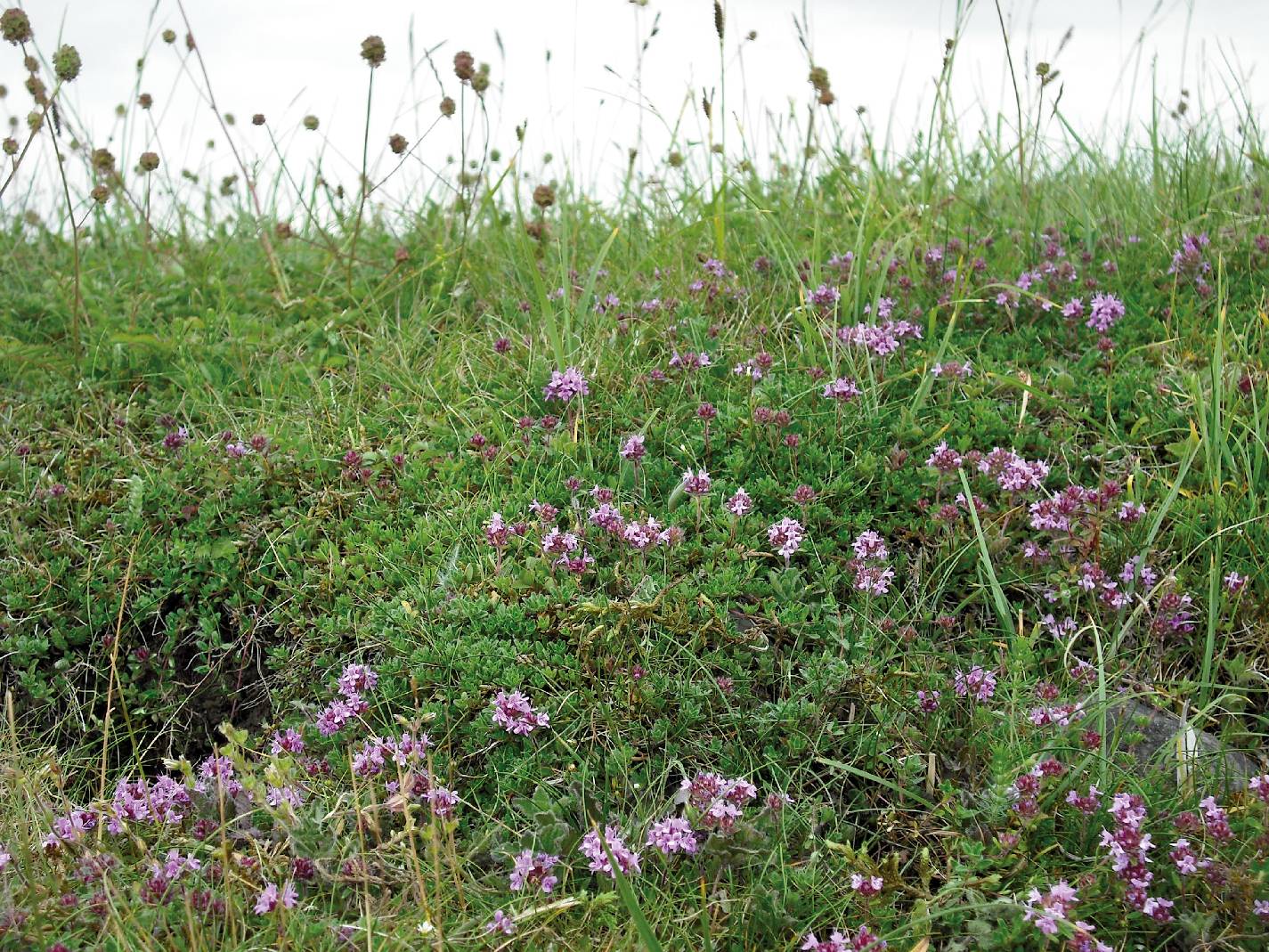Environment
The A303 is a vital road between the south east and south west of England. The section that passes Stonehenge is a notorious traffic bottleneck.

The current road cuts through the middle of the Stonehenge, Avebury and Associated Sites World Heritage Site (WHS) and is situated just 165m from the Stonehenge monument itself.
We’re planning to greatly improve the area by removing the road, putting traffic through a 3.3km tunnel.
By removing most of the road from the WHS we’ll provide more space for wildlife to thrive, and create new access for walkers, cyclists, and horse riders – who will be able to explore the landscape like never before.
We’ve been working closely with key stakeholders like Natural England, National Trust, and Wiltshire council to develop a scheme that aims to not only directly benefit road users but enhances habitats for plants and wildlife. We’re also working with our suppliers and contractors to maximise opportunities to reduce our carbon footprint as much as possible.
Our environmental surveys
Wildlife
We’ve been out and about doing wildlife surveys. These are the latest in a series over several years helping us to build a detailed picture of the wildlife around the A303 – what plants and animals are there and where they live. All that information will help us keep them safe during construction.
We’re creating more than 300 acres of new chalk grassland adding to what is already one of the world’s largest areas of this type of habitat. All sorts of animals will be able to move freely above the tunnel and across the new road on four green bridges.
The project will take practical steps to help protect the local wildlife and create new areas in future, leaving a lasting legacy for the environment in this area.
Badgers
Badgers have a characteristic black and white-striped face, grey fur, and short furry tail. Did you know that around 80% of a badger’s diet is made up of earthworms? They can eat hundreds of them in a single night!
Playful, houseproud and expert foragers, badgers can occupy the same sett for generations, or make new setts within days.
Newts
There aren’t many ponds in this largely dry, open landscape, but we do find great crested newts and other amphibians in some parts of the Stonehenge landscape.
Living up to their name, great crested newts are the UK's largest newt species and are much darker in colour than other newt species. The males also show off their famous ‘crests’ from their name along their backs during the breeding season. They are also known as ‘warty newts’. We won’t harm any ponds and will take care to protect any newts in the area and once the scheme is built there will be more areas where newts can forage and rest.
Want to know more about how the A303 Stonehenge team are supporting the wildlife on Salisbury Plain? Follow us:
Twitter: @A303Stonehenge
Facebook: A303 Stonehenge Community
Ecology
One of the main benefits of the scheme is to enhance biodiversity in the area. Wildlife will be able to move freely above the tunnel and across green bridges.
We also aim to improve connections between the east and west to help butterflies and other insects to move more easily between flower-rich areas where they can feed and breed.
So far, we’ve found and counted a number of insects, and plant species.
Brimstone butterfly
This Brimstone (Gonepteryx rhamni) was found perching on a Scabiosa flower. These fairly large, pale yellow butterflies aren’t very common but can be found in damp woodlands, mature hedgerows, and in large gardens. It is thought the colour of the male Brimstone’s wings may have inspired the name butter-fly.
Scabiosa ‘Butterfly blue’ flowers are known for attracting bees, birds, butterflies/moths and other pollinators.
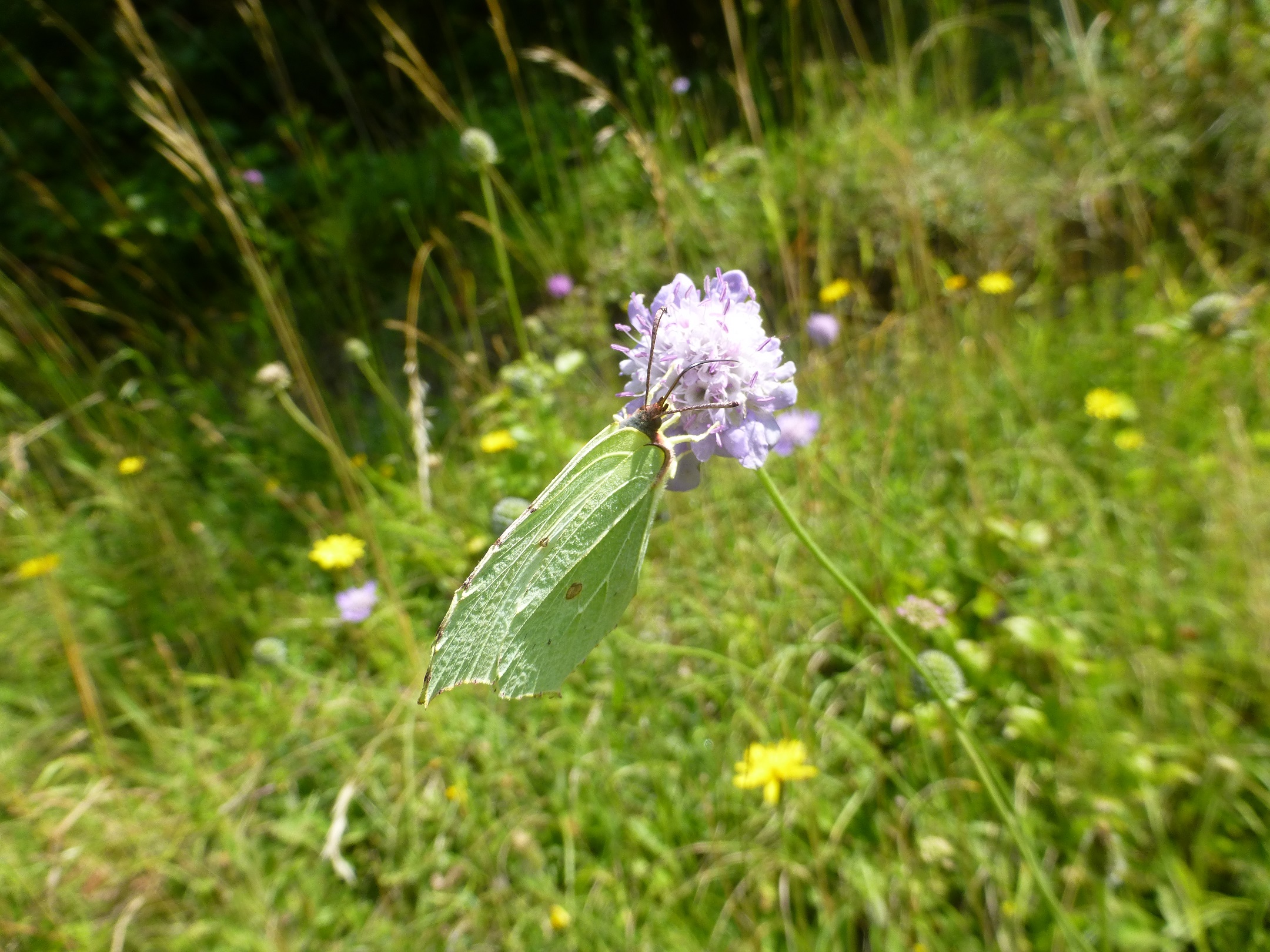
Wild carrot
Wild carrot (Daucus carota) is found in chalk rich soils and has been known as Queen Anne’s Lace in the past. It’s the wild form of the cultivated carrot, which flowers from midsummer to autumn and attracts insects including bees, beetles and hoverflies.
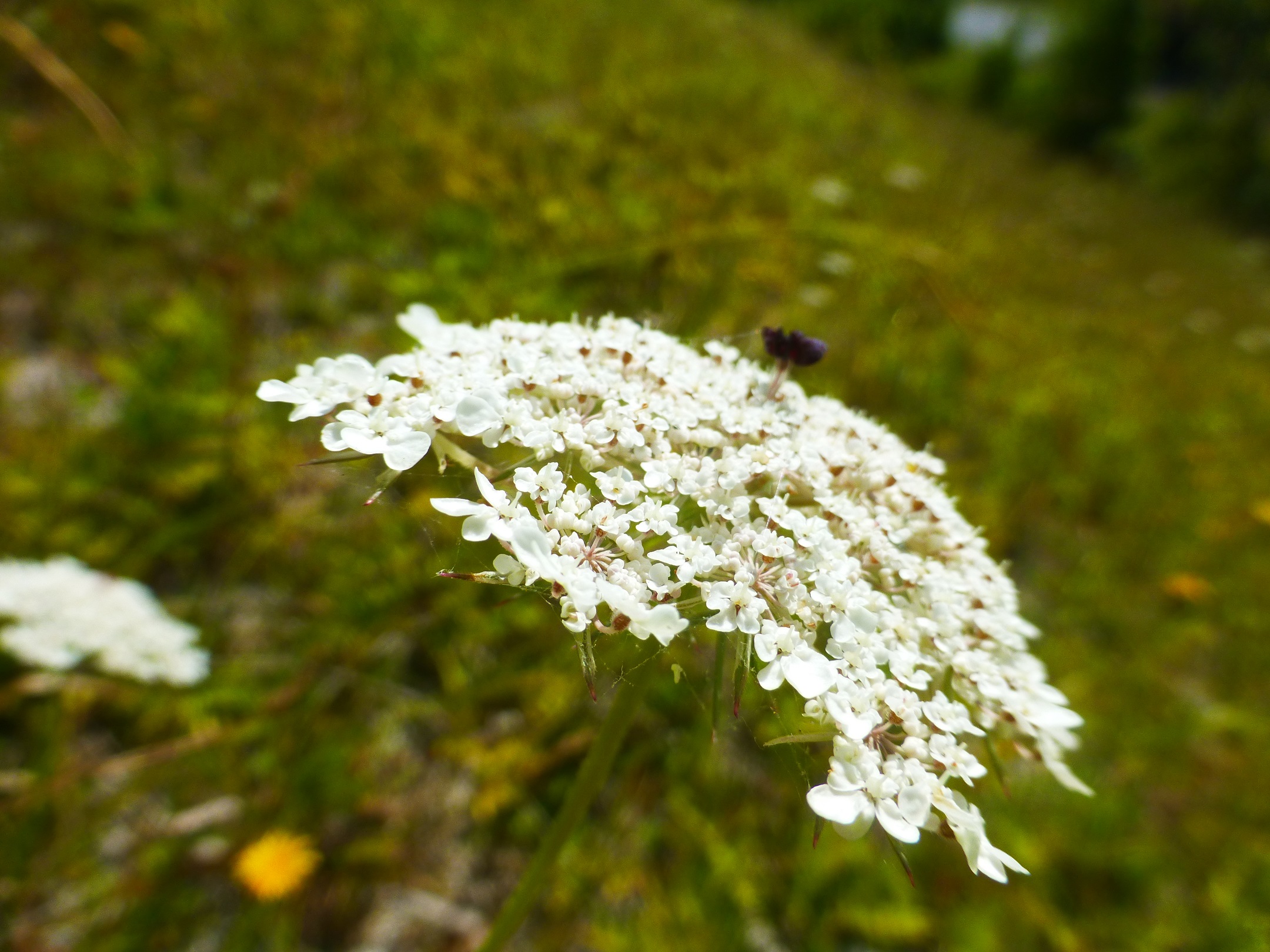
Wasp spider
The Wasp spider (Argiope bruennichi) has a distinct white zig-zag stripe running down the middle, which is thought to attract pollinating insects like flies, bees and moths.
First recorded in England in the 1920s the species has colonised in the south, but is slowly moving north.
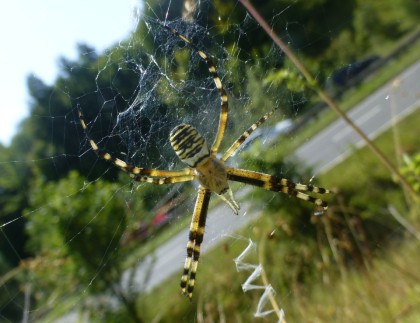
Dwarf thistle
Dwarf Thistle (Cirsium acaule) also known as the picnic thistle is typically found in chalk grassland. The plant is considered to be a good nectar source for insects, and late summer butterflies.
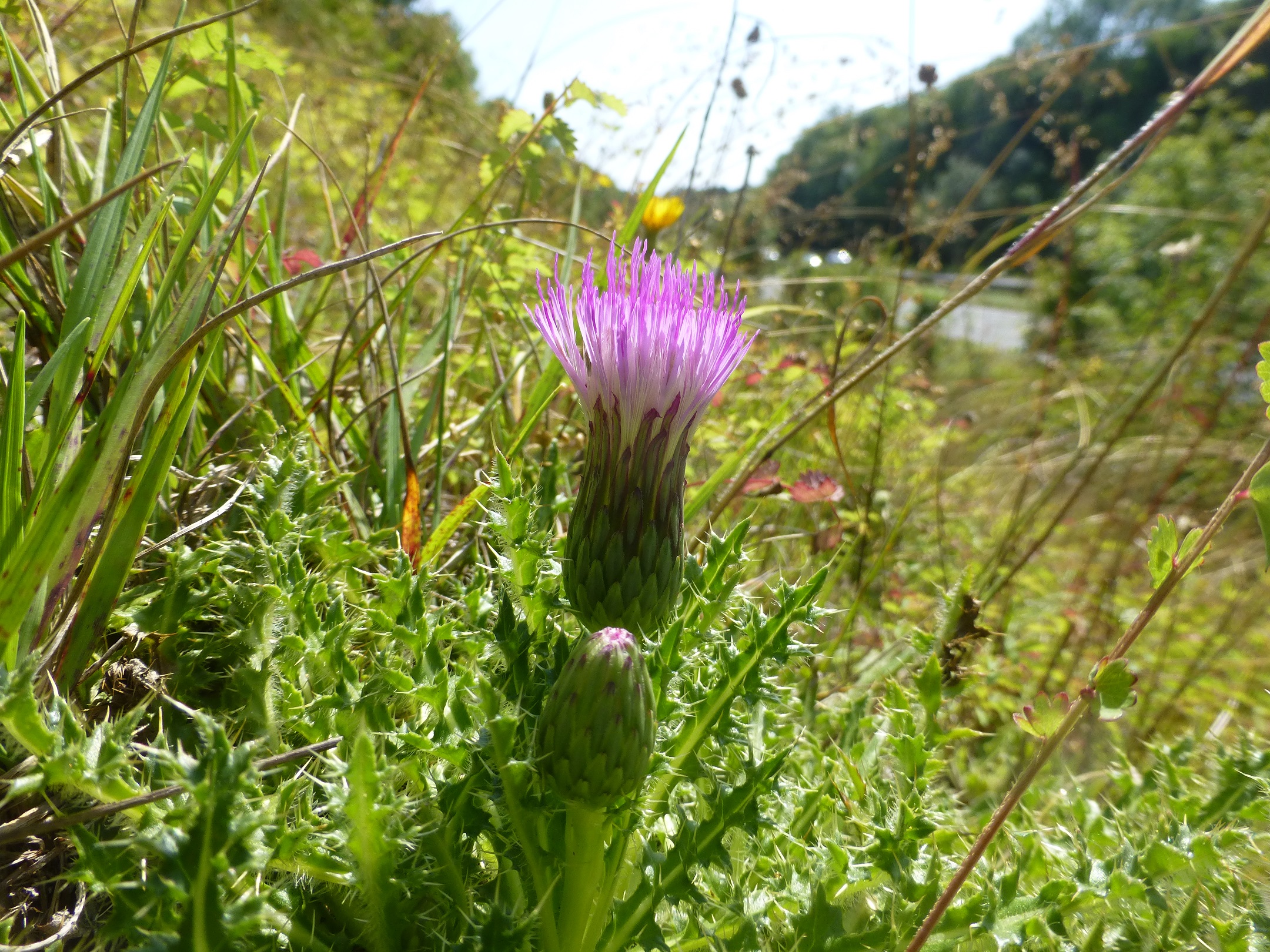
Butterflies
We’ve carried out in depth ecology surveys over the years, however it’s important to keep our data up to date, so we can have a clearer understanding of the surrounding landscape.
We asked lead ecologist Stephanie Peay on the A303 Stonehenge scheme to explain what happens during a butterfly survey and why it’s so important to have butterflies in ecosystems.
Who carries out a butterfly survey?
These butterfly surveys are being carried out by experienced ecologists.
What are pollinators?
Pollinators include animals such as insects, that move pollen from one plant or part of a plant to another when they feed on pollen, or nectar produced by the flowers. Many plants must be pollinated by insects before they can produce fruits or seeds. Butterflies are among the many kinds of insect pollinators. You can find out more about pollinators on the Buglife website.
How does the survey work exactly?
The survey method we use is the one for a national butterfly monitoring project, the Wider Countryside Butterfly Survey and involves walking a route recording butterfly species and counting them.
We’re doing a total of four visits between July and August and all the information will go into the national monitoring project, so it can be recorded and contribute to total butterfly numbers right away.
Our specialists will repeat the surveys in future years and compare results, to understand how the area has changed through the construction of the scheme – providing it gets the green light of course.
How did you decide which areas to carry out the surveys?
We’ve chosen routes that will become public rights of way under the current scheme proposal so that in future everyone can see the butterflies and enjoy the environment.
What’s the benefit of carrying out these surveys?
One of the main benefits of the scheme is to enhance biodiversity in the area. Wildlife will be able to move freely above the tunnel and across green bridges, and we aim to improve east and west connectivity to help butterflies, and other insects move more easily between flower-rich areas where they can feed and breed. Carrying out the surveys will help us see how soon this happens after the scheme is built.
We’d like to know more about how butterflies are using the area near to the scheme, so that when the new road is built, and the new chalk grassland is growing we can measure the difference. The food plants for specialist butterflies of chalk grassland aren’t in the cereal crops of the area and where butterflies are present it is mostly around the hedges and field margins. You might find some flowers which butterflies visit – however the area is not attractive enough at the moment for more specialist species of butterflies.
Why are butterfly numbers so important?
They are sensitive indicators of the health of the environment and play crucial roles in the food chain, as well as being pollinators of plants. Many species are under threat due to loss of their habitats. They can fly, but many of them don’t go far if the habitat they must cross isn’t suitable, and they are sensitive to climate change too. You can find out more on why butterflies are so important for the ecosystem on the Butterfly Conservation website.
Why would increasing the chalk grassland area help increase butterfly numbers?
Currently within the scheme proposal we’re aiming to create more than 300 acres of new chalk grassland which will contain lots of flowers and food plants for caterpillars, which will greatly benefit butterflies.
We’ve seen a good increase in butterfly numbers and species following the opening of the Weymouth Relief Road in Dorset. Completed in 2011 the road has slopes of chalk grassland next to it and there have been over 30 species of butterfly recorded, which is over half the butterfly species known to live in Britain, and includes Small Blue, Adonis Blue and Chalkhill Blue.
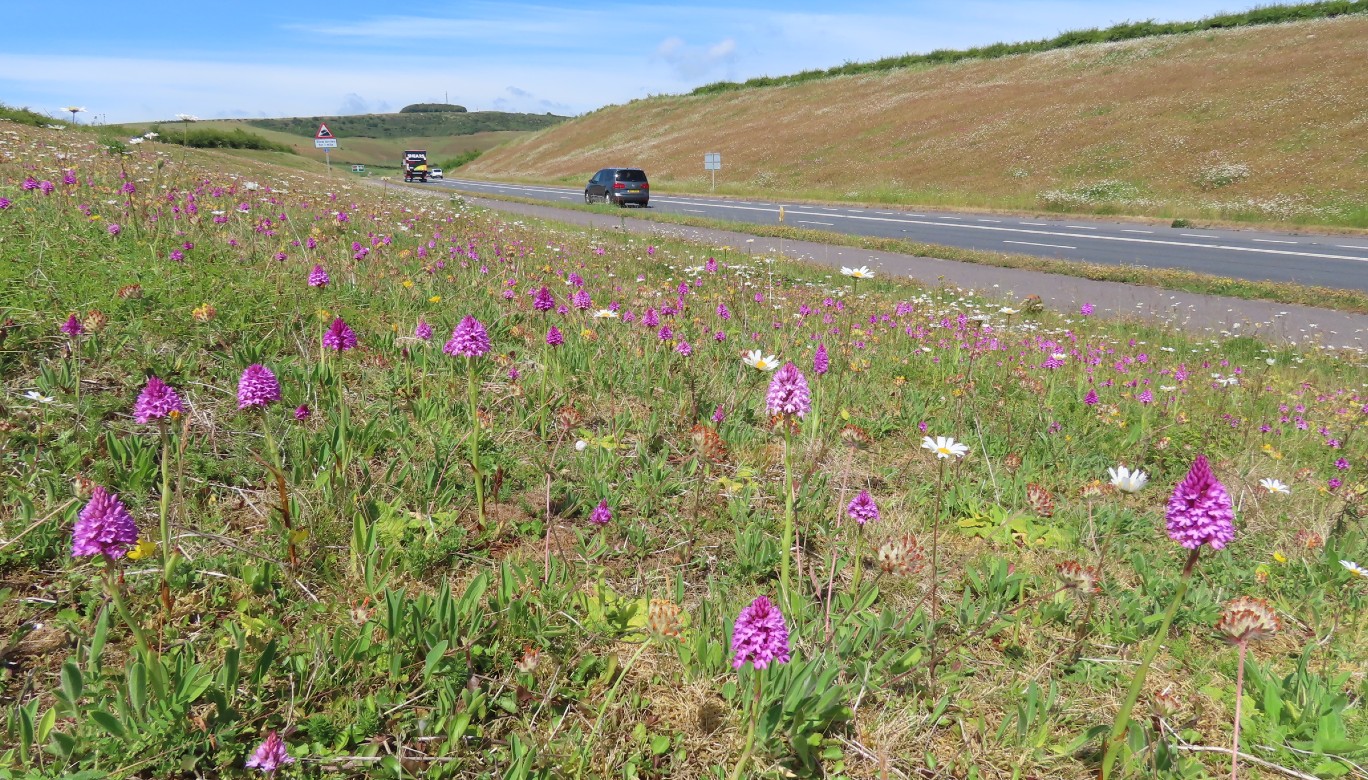
(Photo: Weymouth relief road)
The chalk grassland for the A303 Stonehenge would be greater in area, longer in length and better connected to existing chalk grassland.
How can I get involved?
Anyone can contribute to recording the UK butterfly numbers. The Big Butterfly Count is a UK-wide survey aimed at helping the UK to assess the health of our environment simply by counting the amount and type of butterflies (and some day-flying moths) we see. Simply visit the Big Butterfly Count website to find out more information.
Anyone with a garden or even a window box can help butterfly numbers by planting flowers that provide nectar.
Please check back for further updates on how our surveys have gone and what our ecologists found.
Botanical
We've carried out a botanical survey on the A303 west of Countess roundabout near Amesbury, which will provide important information to help us in our plans to create more habitats when the new road is built.
We recorded details of the vegetation near the road in the 1960s to compare with the future chalk grassland we will create on a new longer cutting, which will replace it on the approach to the eastern entrance of the tunnel.
One of our aims is to enhance the environment through the creation of new areas of chalk grassland - and this cutting is a small part of a far larger and extensive package of measures to achieve this.
How does the survey work exactly?
During the survey multiple areas of grassland around 1m2 in size are selected and an experienced ecologist records all the plant species inside the area.
By counting numbers and the variety of plant species we can understand how good the existing habitat is, which in turn will help us measure the improvements made once the scheme has been completed.
Why now?
We’ve carried out in-depth botanical surveys in the past and this new survey will gather the most up to date information possible.
We asked Natural England’s Charles Routh to tell us what’s so special about Wiltshire and how our scheme will enhance the area.
“Wiltshire has two world class areas of importance for wildlife; Salisbury Plain and the River Avon, both of which are designated as important European sites for wildlife.”
Who are Natural England and what’s your role?
“We're the government’s adviser for the natural environment in England, helping to restore England’s wildlife and landscapes.
“I manage Natural England’s dozen or so staff in Wiltshire. They work on a range of things: managing the national nature reserves in the county, and work to ensure sites of Special Scientific Interest are well managed. They also spend much of their time with farmers, advising on managing their land for wildlife and environmental schemes, and advising the Local Authority on planning applications.
“I’ve been advising National Highways as they have developed their scheme proposals to ensure it has minimal impact on the existing wildlife, and helping them make the most of any opportunities from the scheme to improve the area for wildlife.”
What’s so special about Salisbury Plain?
“Salisbury Plain puts Wiltshire on the global stage in terms of wildlife. Although a military training area, it is also the largest area of chalk grassland in the world. Chalk grassland is one of the richest habitats in Europe, and contains as many as 45 plant species per square metre. It’s also superb for birds, including the rare and elusive Stone Curlew. About a third of the UK population live there.
“However, the Plain has been severed from other areas of nearby chalk grassland such as Porton Down. As part of the government’s plans to create a nature recovery network, we want to reconnect these two areas, and enable wildlife to be more resilient in the face of climate change.”
What about the River Avon?
“The River Avon, including its tributaries form the longest chalk river system in the world – another world-class feature for wildlife.”
What benefits will the A303 Stonehenge scheme bring to the area?
“Under the current design proposal National Highways plans to create more than 300 acres of new chalk grassland. There will also be 10 miles of new rights of way for walkers, cyclists and horse riders.
“The location of the road scheme means it can radically help reconnect the area for wildlife. The scheme will reunite the isolated chalk grassland around Stonehenge to Salisbury Plain, and go a long way to joining right across to Porton Down – a serious achievement.
“During the time we’ve been working with National Highways advising them on their design proposal, we took them to see the Weymouth relief road in Dorset. The road verges there were established in 2011 with minimal top soil over chalk, and are now an astonishing sight, home to half of the UKs butterfly species, and all managed with minimal mowing costs.
“National Highways plans to replicate this roadside habitat within the proposal for the A303 Stonehenge scheme - essentially creating a highway for butterflies and other species of animals.”
How will Natural England and National Highways work together post DCO?
“A lot of positive things have been included in the scheme proposals, and we’ll be carrying on working with National Highways to help make them happen.”
